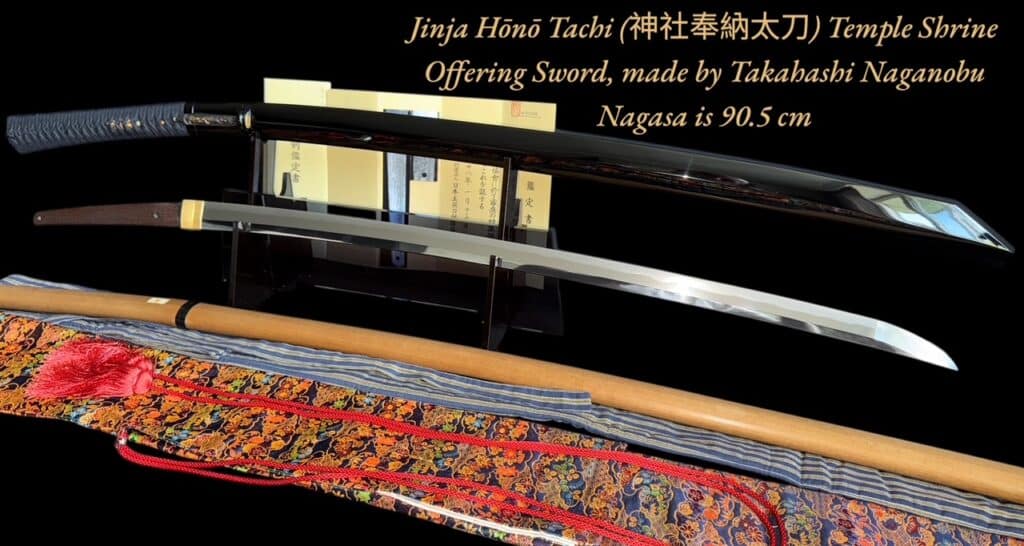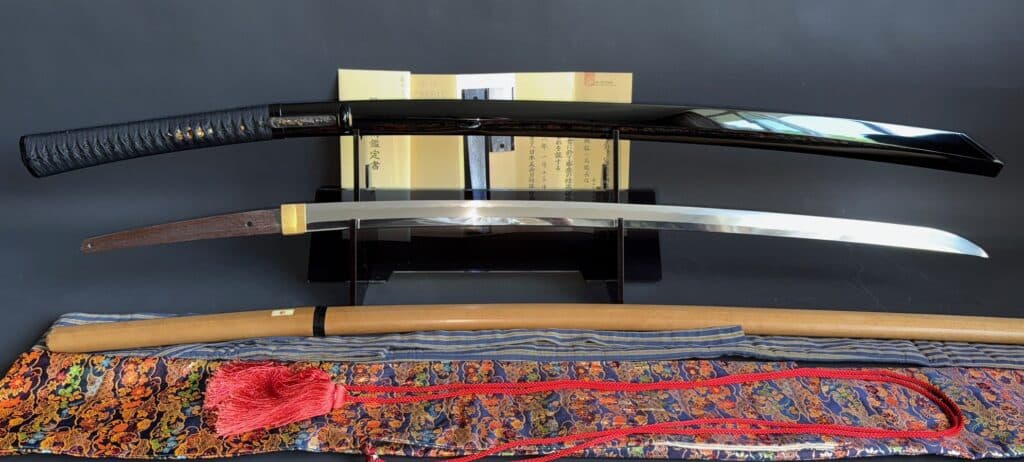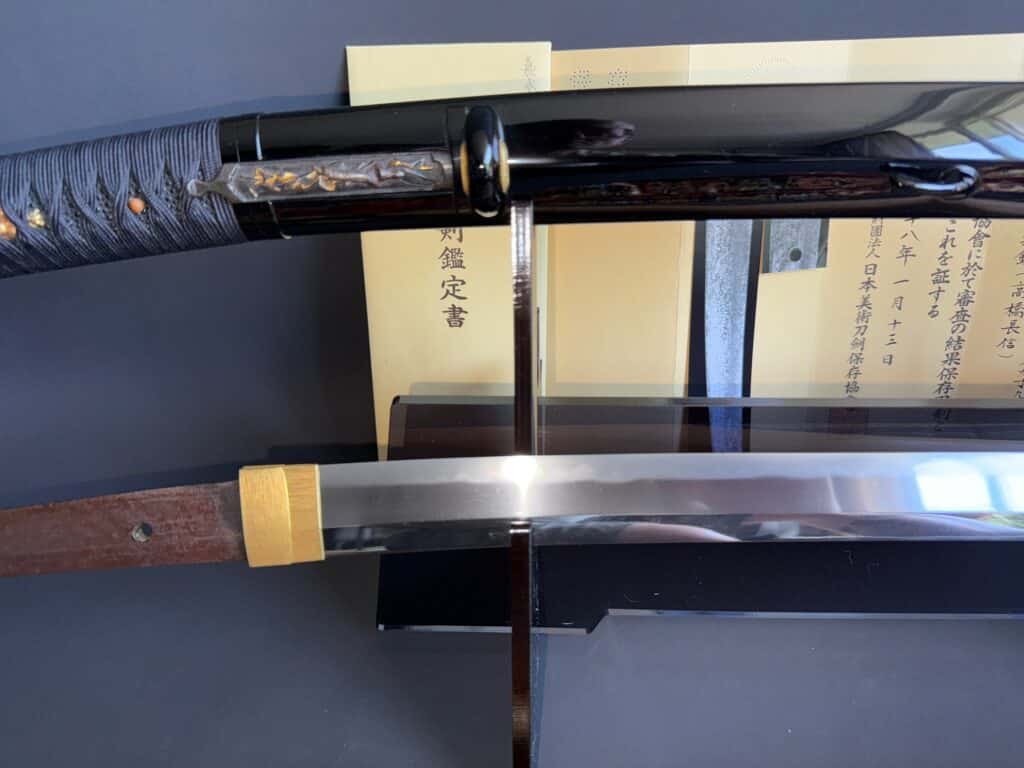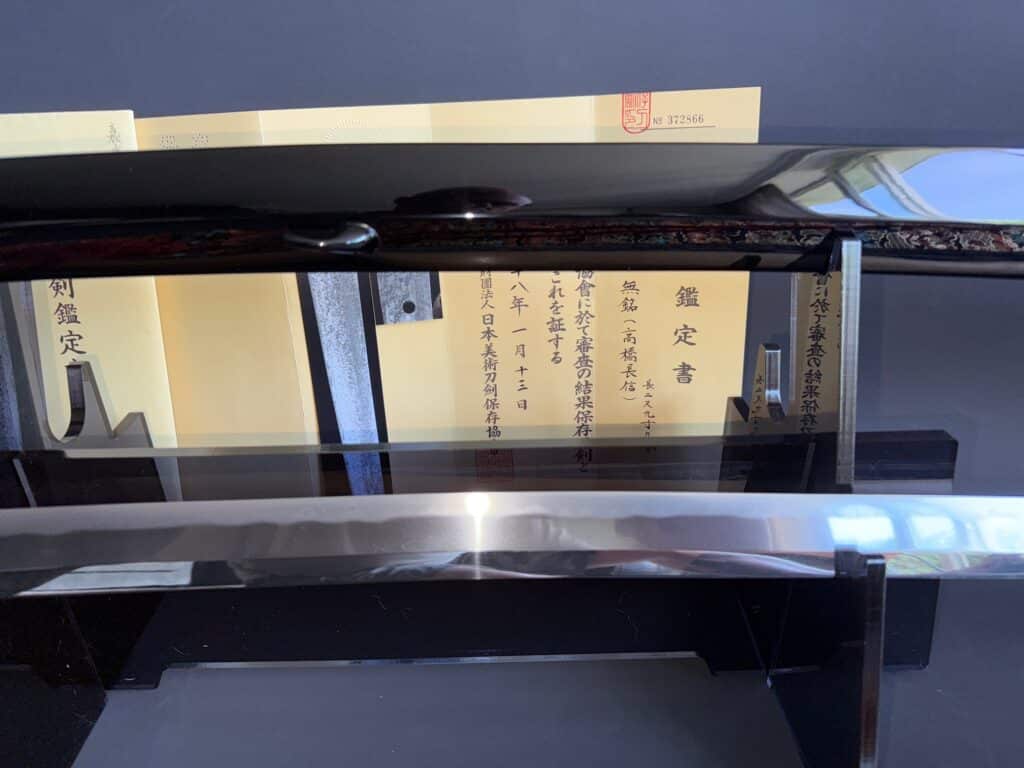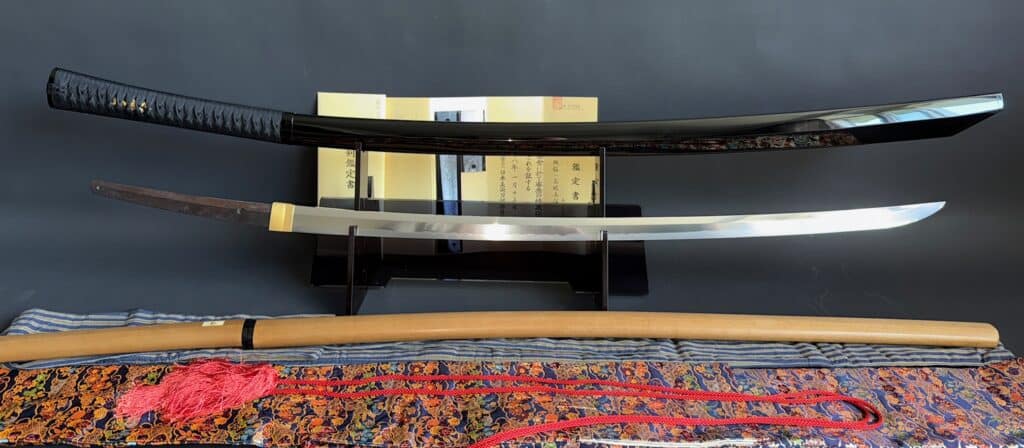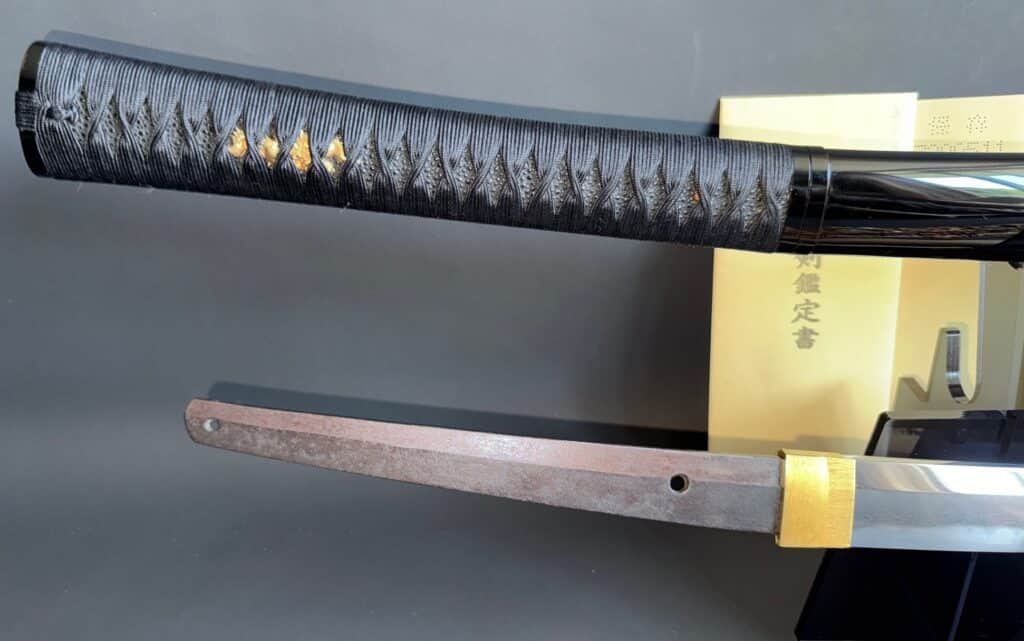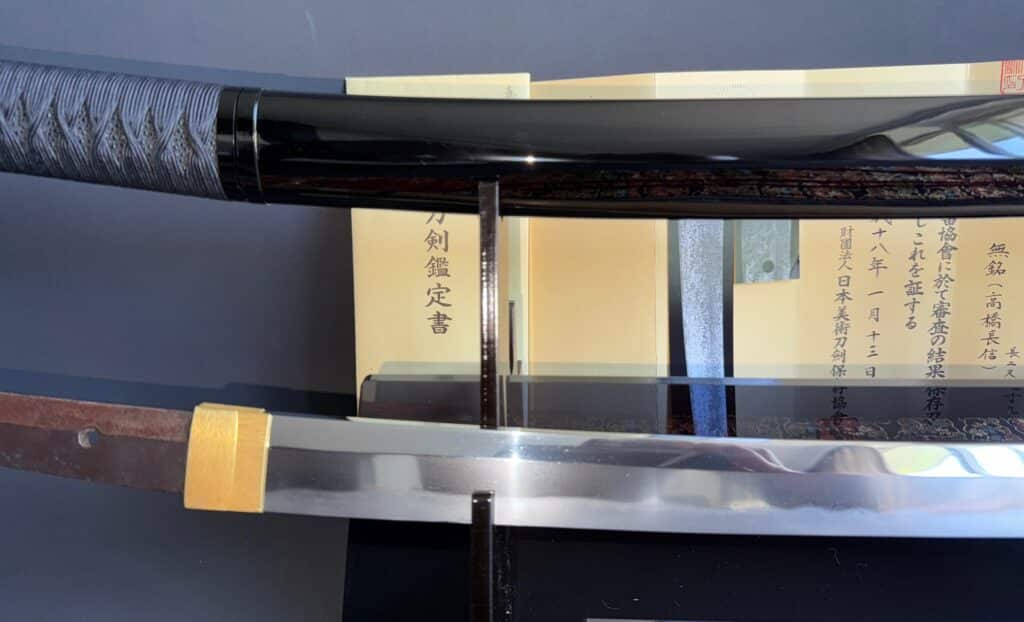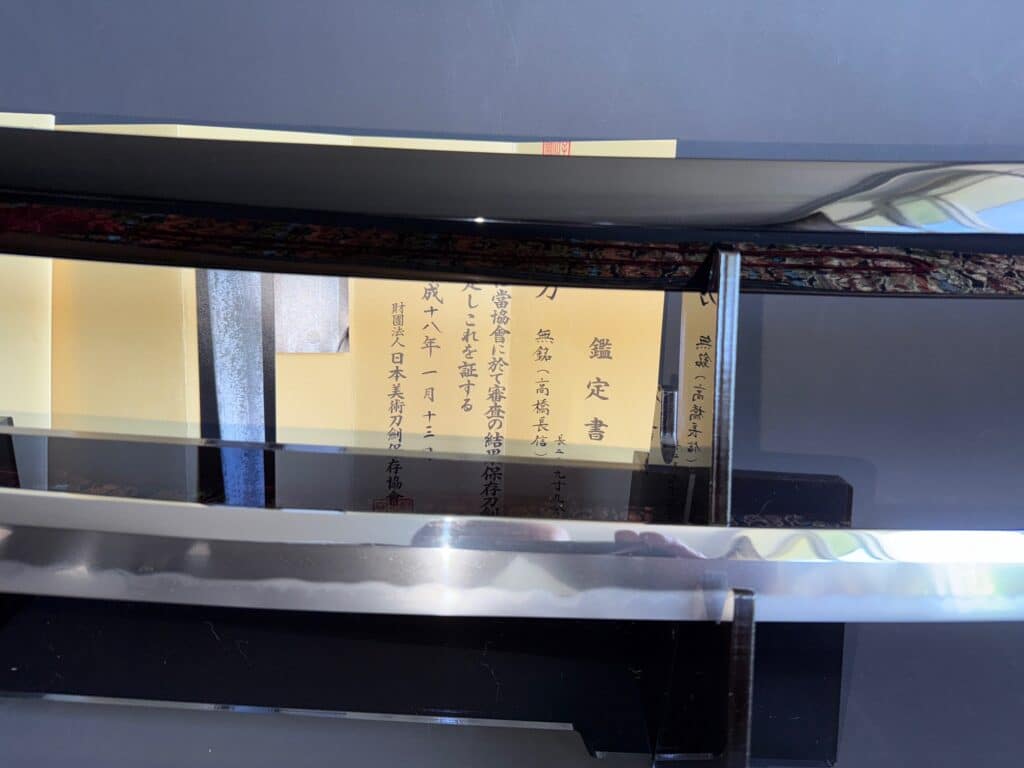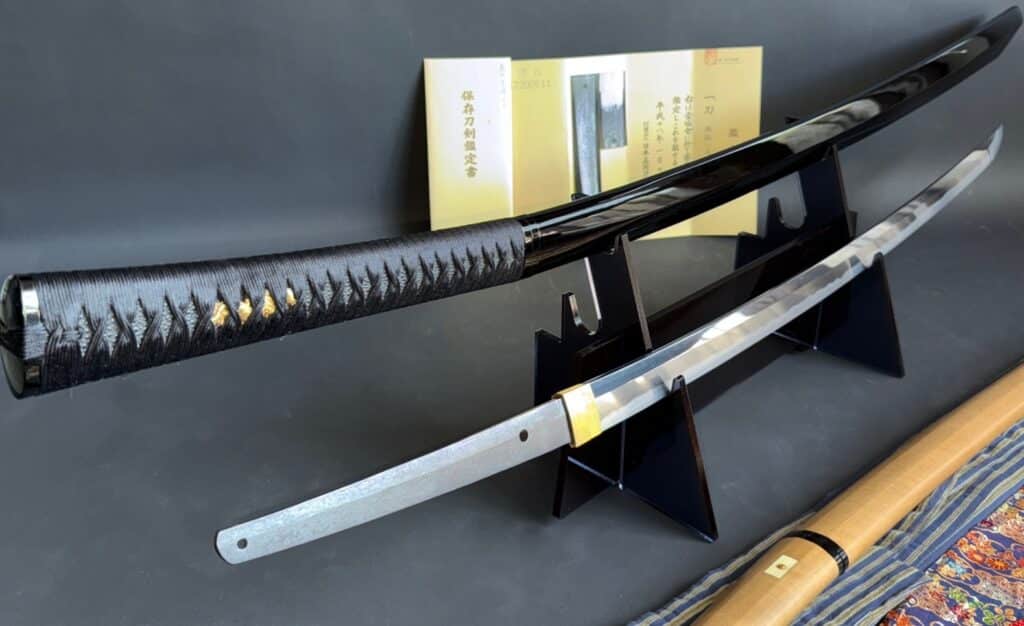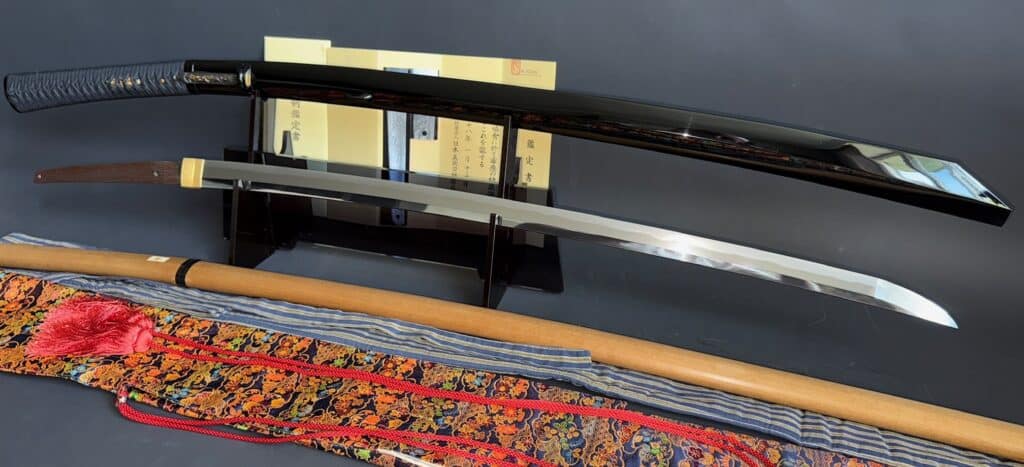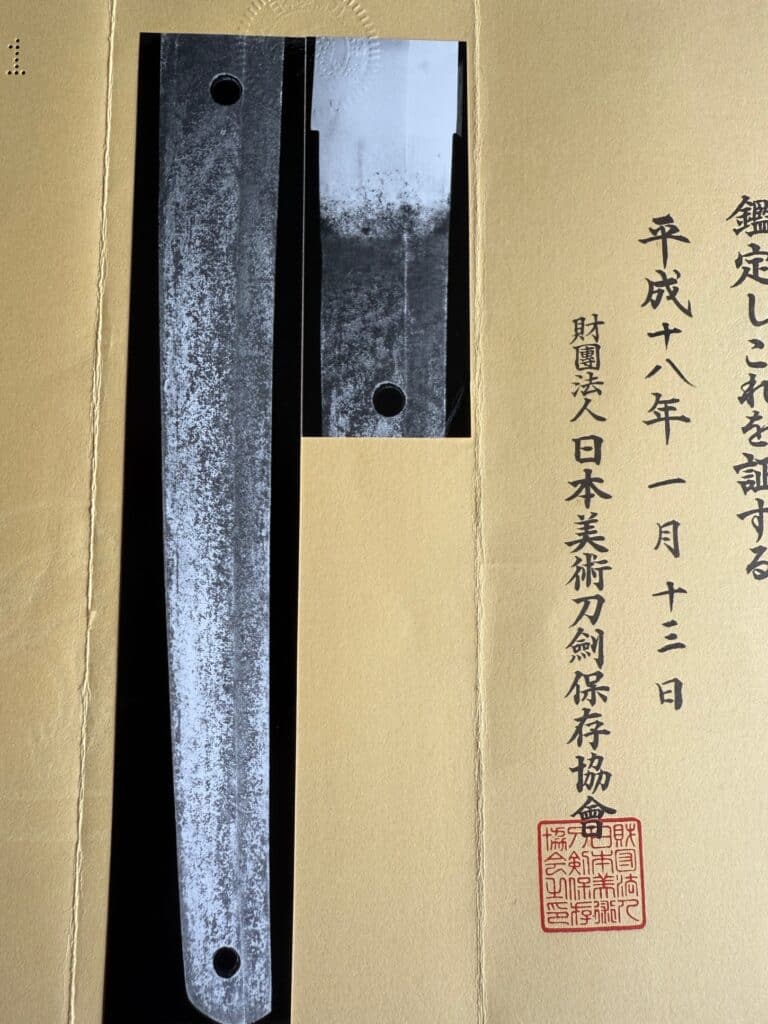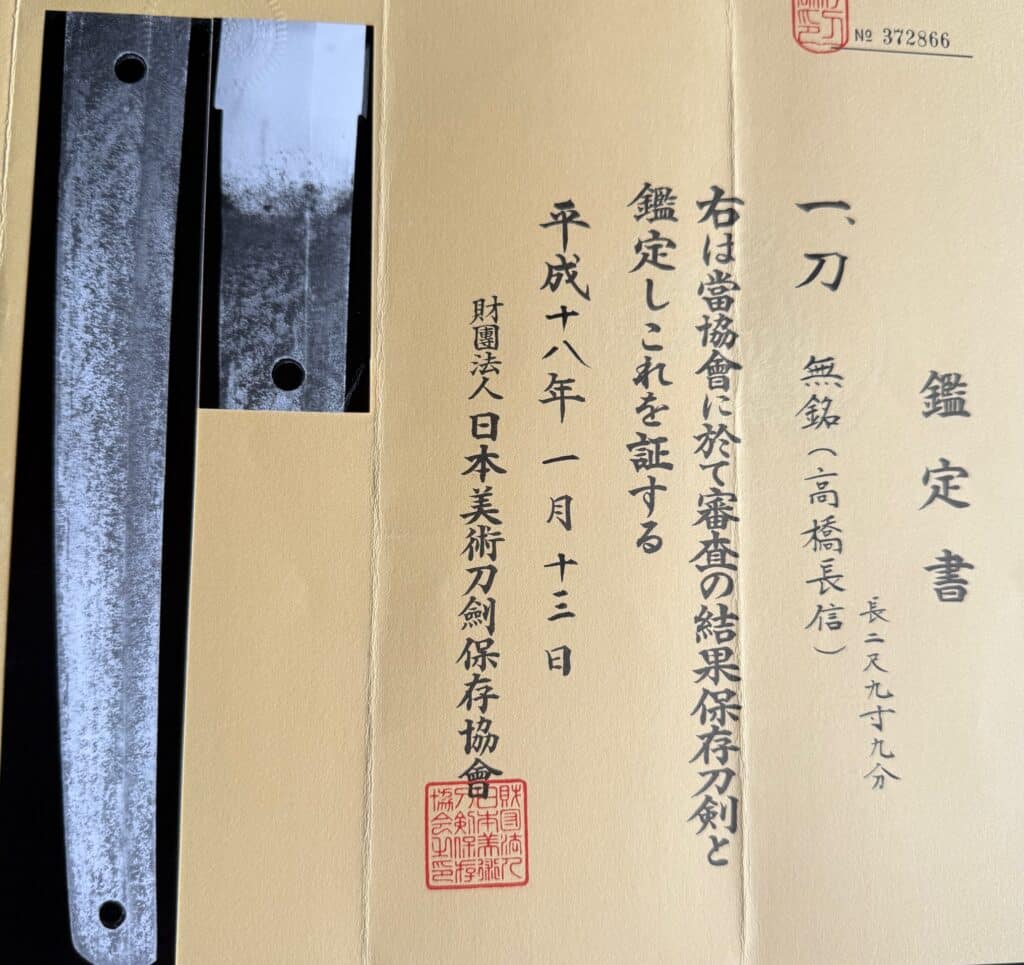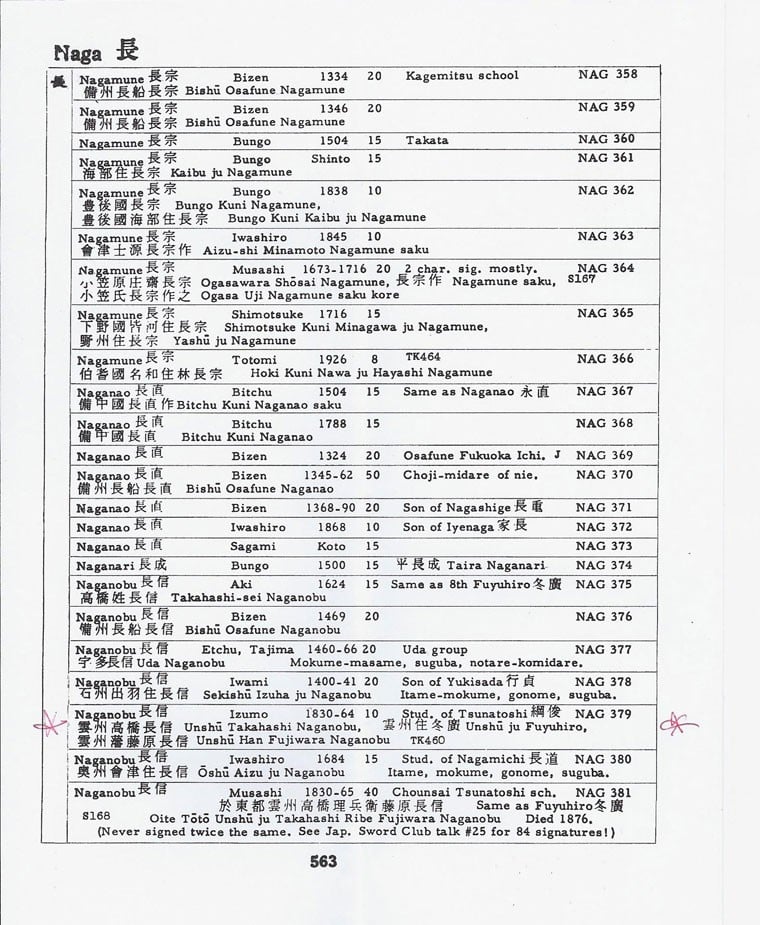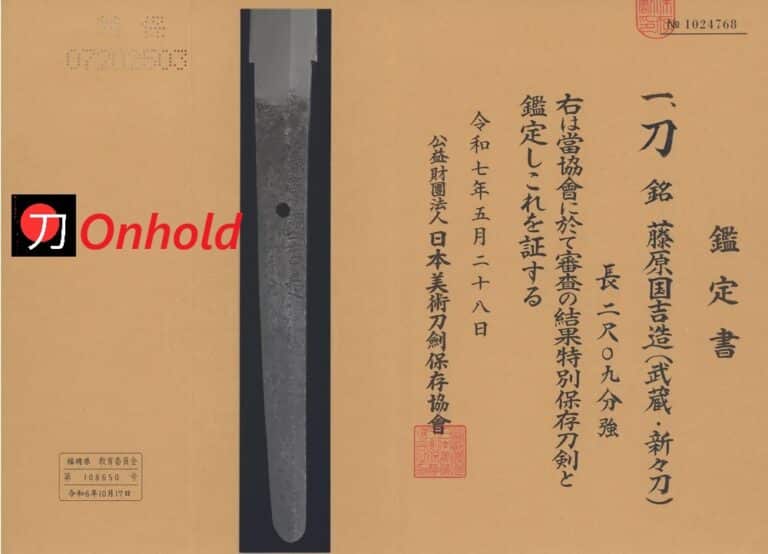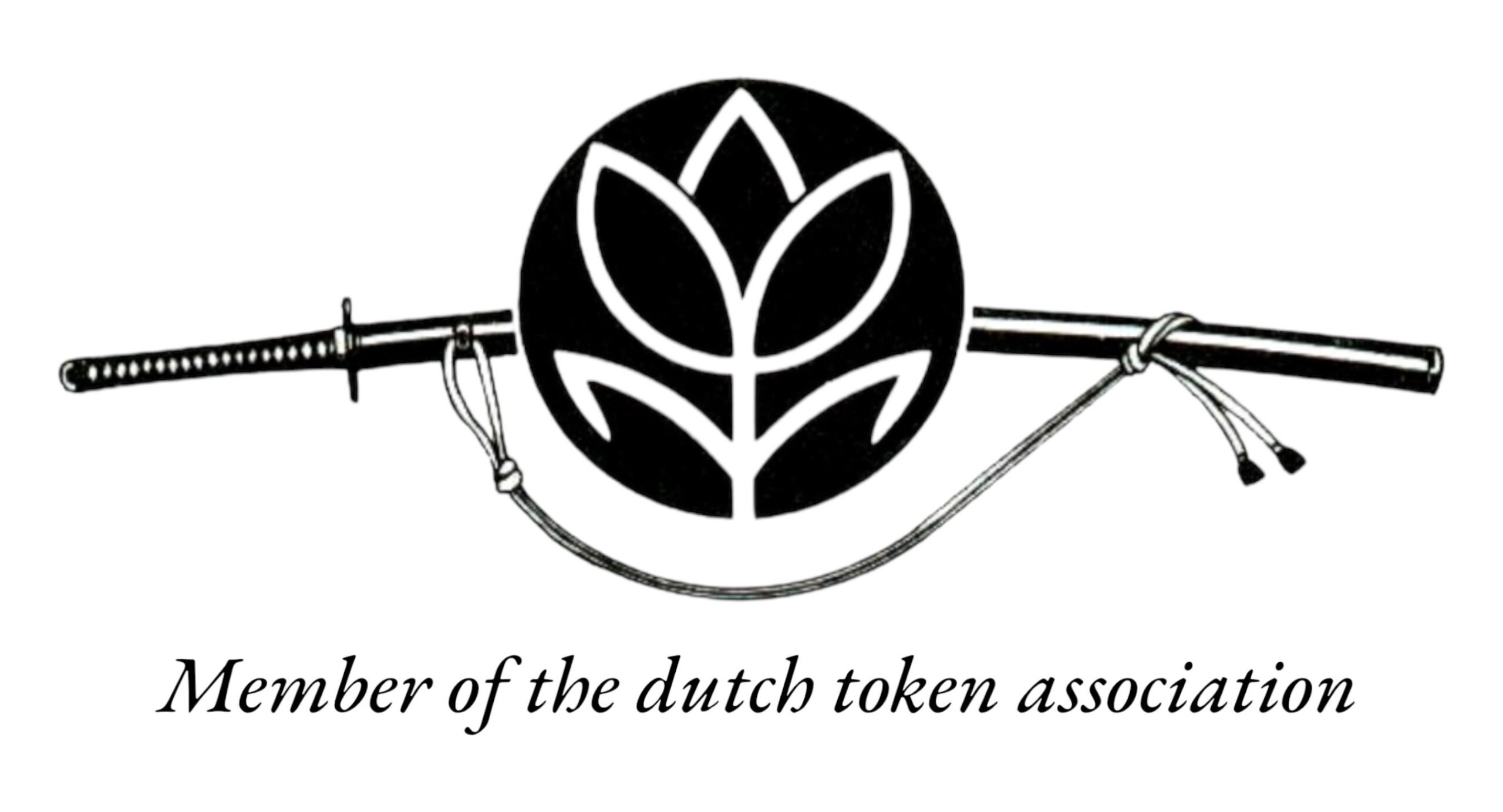Description
This is an exceptional and highly Shinshinto period No-Dachi shrine sword, attributed to Takahashi Naganobu, and it embodies both technical mastery and historical significance.
Shinshinto Period No-Dachi Katana for Temple or Shrine Dedication
Attributed to: Takahashi Naganobu (高橋長信)
Period: Shinshinto, ca. 1830–1860
Provenance: Izumo and Bushu Edo (modern-day Shimane & Tokyo prefectures)
Papered: NBTHK Hozon
Sword Details
-
Type: Shinogi-zukuri No-Dachi (Shrine-dedicated oversized katana)
-
Nagasa (Cutting Edge): 90.5 cm
-
Motohaba (Base Width): 3.7 cm
-
Kasane (Thickness): 0.84 cm
-
Sori (Curvature): 2.0 cm
-
Weight (Blade Only): 1306 g
-
Mounts Length: 133 cm (Aikuchi koshirae)
Blade Features
-
Condition: UBU (unaltered, original length), with 2 Mekugi-ana, and no forging flaws or fukure.
-
Hamon: Gunome-midare with vibrant Ara-nie and Niedeki.
-
Jihada: Well-forged Itame with flowing Masanagare, featuring Jinie and Ara-nie.
-
Habaki: High-quality 2-piece gold-foil wrapped type.
Mountings (Koshirae)
-
Type: Rare, specially commissioned Aikuchi-style koshirae (typically reserved for tanto), designed for ceremonial donation.
-
Saya: Lacquered in black Urushi, fitted with buffalo horn elements including Fuchi & Kashira, Kaeshizuno, and Kojiri.
-
Tsuka: Exceptionally large at 33 cm, bound in black silk Ito over black lacquered Samegawa.
-
Kashira: Approximately 6 cm wide.
-
Menuki: High-relief Shakudo dragons with gilding.
-
Kogai: Rare, Muromachi period (ca. 1500), with plant motif and gold accents.
-
Shirasaya: Included, with Tsunagi (wooden blade replica).
Historical Context and Significance
Takahashi Naganobu (1817–1879) was born in Izumo as Sezaki Zenzo. Trained under the 15th-generation Fuyuhiro and later Chounsai Tsunatoshi of the prestigious Kato school in Edo, he became known for producing exceptionally sharp, Jo-saku to Saijo-O-wazamono class blades. A devout man, he is also remembered for forging one of the largest ken swords in Japan (150 cm, still at Naritasan Shorinji Temple).
This sword represents his religious and technical legacy, likely donated anonymously (unsigned, as was customary for shrine dedications) in an act of devotion. Such dedicatory swords are exceedingly rare, especially in No-Dachi dimensions with an Aikuchi koshirae.
Appraisal Notes
-
NBTHK Hozon papers confirm the blade’s authenticity and historical value.
-
This is an exceptional example of a Shinto-to-Shinshinto transition period temple offering sword, particularly valued for:
-
Its oversized ceremonial scale,
-
Rare koshirae configuration,
-
Attribution to a Saijo-O-wazamono grade swordsmith,
-
Well-preserved polish and complete mounts.
-

